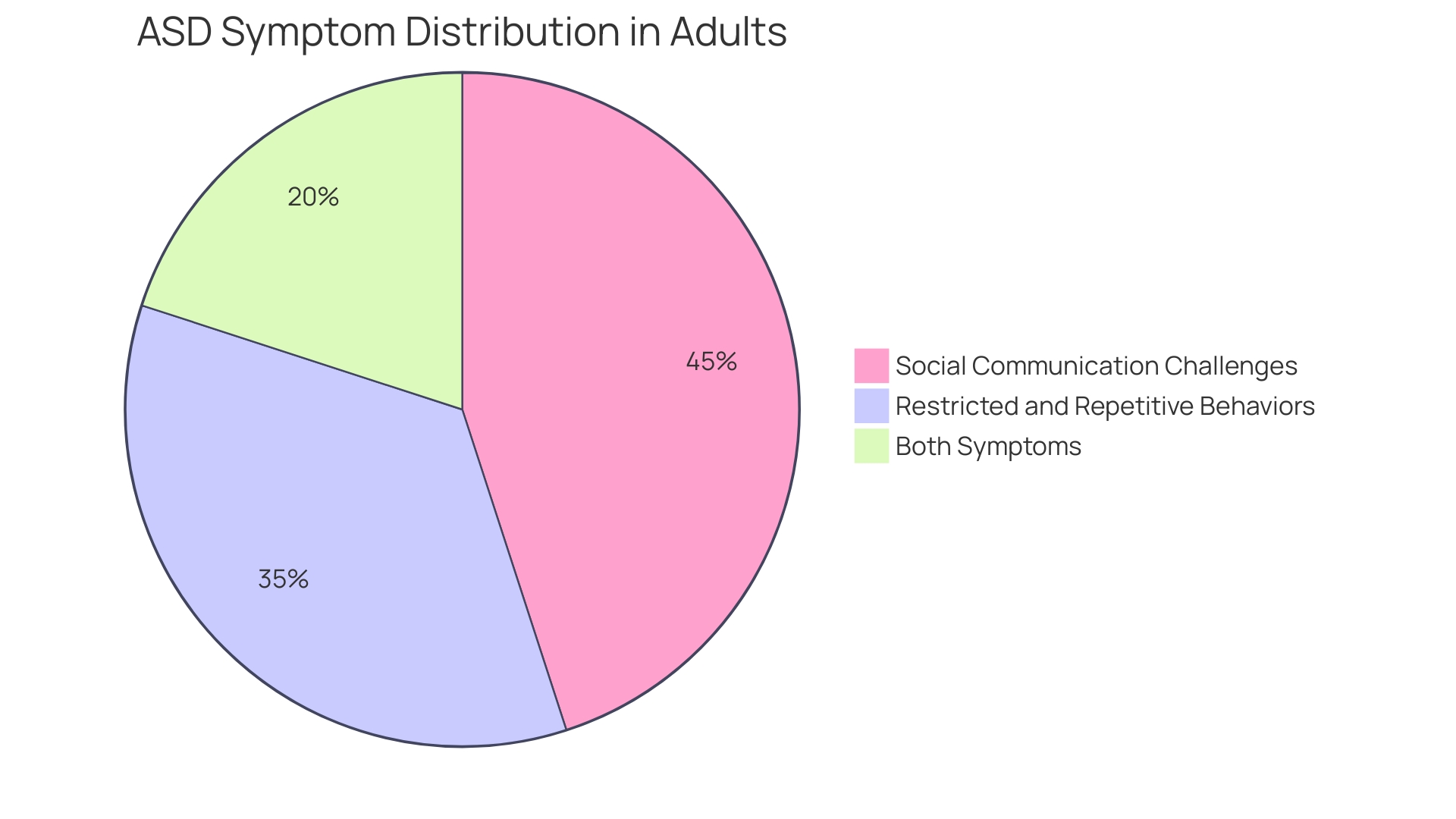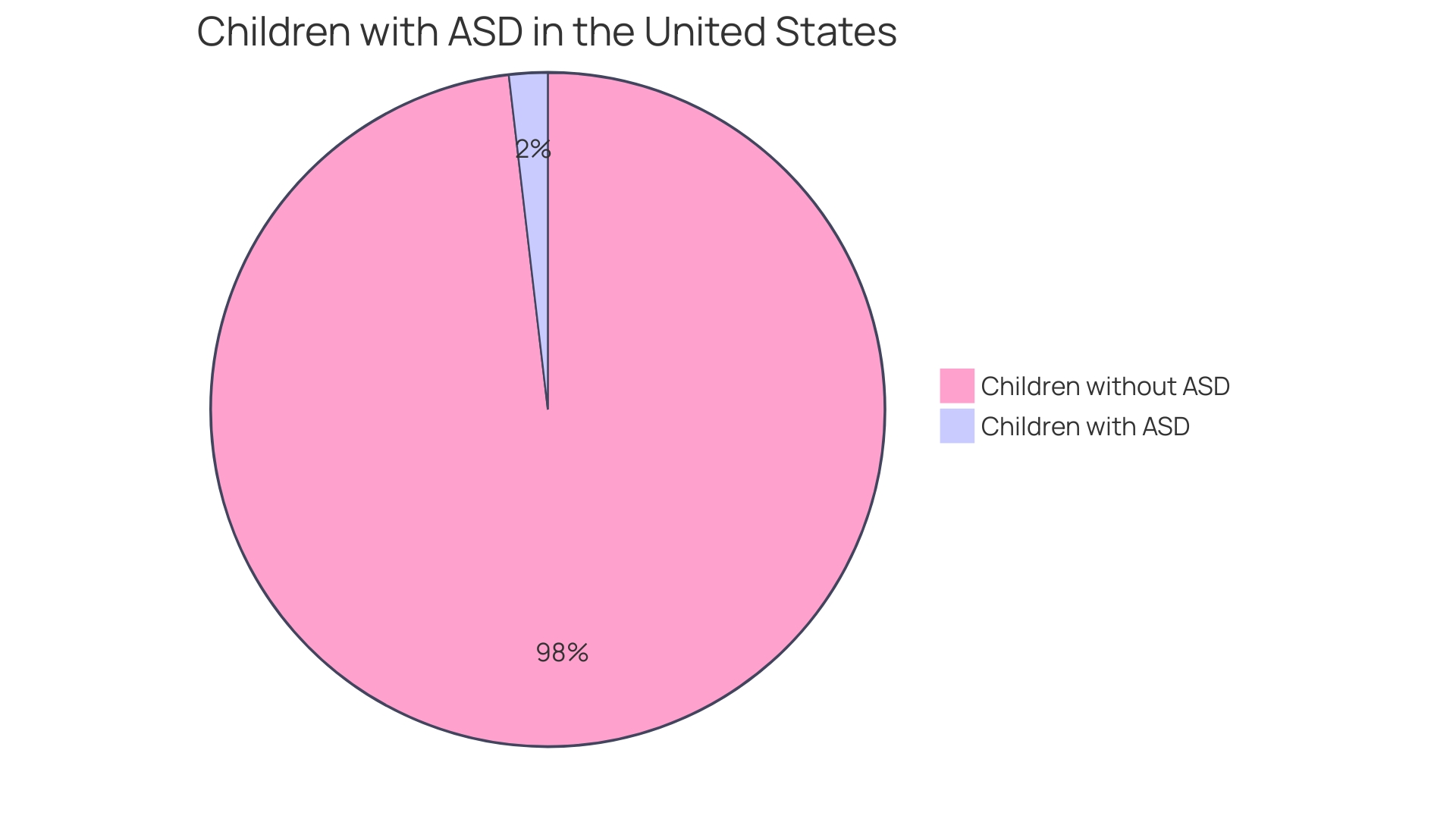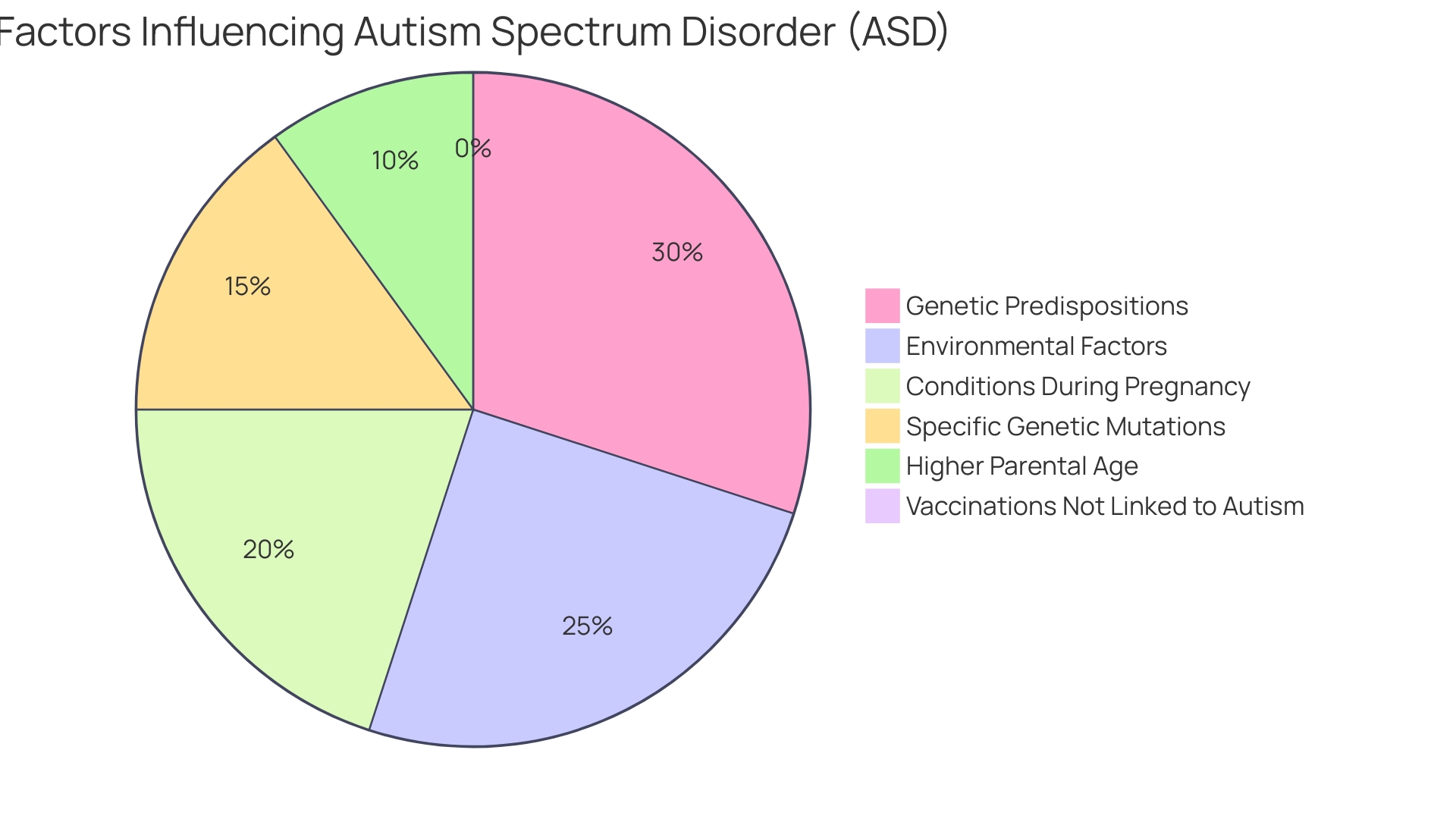Introduction
Autism Spectrum Disorder (ASD) is a lifelong neurodevelopmental disorder that can affect both children and adults. With a significant number of adults in the U.S. diagnosed with ASD, it is clear that autism touches many lives.
However, some individuals may reach adulthood without a formal diagnosis due to emerging awareness and improved screening methods. The core characteristics of ASD include challenges in social communication and restricted and repetitive behaviors.
Understanding these signs is crucial for adults who suspect they or someone they know might be on the spectrum. By identifying these symptoms, adults can take the first step towards obtaining support and resources that cater to their unique needs. In this article, we will explore the impact of ASD on individuals and families, the prevalence and diagnosis of the disorder, its causes and risk factors, treatment and management options, the role of technology in supporting individuals with ASD, and evidence-based practices for improving outcomes. Join us as we navigate the complexities of Autism Spectrum Disorder and empower parents advocates with the knowledge and tools to ensure the well-being of their children.
What is Autism Spectrum Disorder?
Autism Spectrum Disorder (ASD) is more than just a childhood condition; it is a lifelong neurodevelopmental disorder that can affect adults as well. With 1 in 45 adults in the U.S. diagnosed with ASD, it's clear that autism touches many lives, and yet, some individuals may reach adulthood without a formal diagnosis.
This lack of recognition is often due to heightened awareness and improved screening methods only emerging in recent years. Adults on the spectrum may experience challenges with social communication and exhibit restricted and repetitive behaviors, which are core characteristics of autism.
These symptoms can manifest in various ways and impact life to different extents. Understanding these signs is crucial for those who suspect they or someone they know might be autistic. By identifying these symptoms, adults can take the first step towards obtaining support and resources that cater to their unique needs. The journey toward diagnosis and support for adults with ASD begins with acknowledging the signs that have been present throughout life, perhaps brushed off or misunderstood, but are indeed indicators of this complex disorder.

Characteristics of Autism Spectrum Disorder
Autism Spectrum Disorder (ASD) is a complex condition that manifests in a variety of ways, and its characteristics can differ widely among individuals. A significant number of adults—one in every 45 in the U.S.—are diagnosed with ASD.
Despite greater societal awareness and enhanced screening efforts, many adults may remain undiagnosed or have been incorrectly diagnosed in the past. The core signs of autism to be aware of include challenges in social communication and the presence of restricted and repetitive behaviors, which are consistent in adults as they are in children.
For adults who have navigated life's complexities without a clear understanding of their experiences, recognizing these signs can be the first step towards identifying ASD. Symptoms such as social interaction difficulties, trouble with both verbal and nonverbal communication, repetitive actions or limited interests, heightened or diminished responses to sensory input, and a preference for predictable routines are indicative of ASD. Acknowledging these signs is crucial for adults who may have ASD, as it can pave the way for support and strategies to enhance their quality of life.
Impact of Autism Spectrum Disorder on Individuals and Families
Autism Spectrum Disorder (ASD) presents a complex landscape for individuals and their families, permeating various facets of life. The prevalence of ASD in adults is more common than previously thought, with recent statistics revealing that 1 in 45 adults in the United States are diagnosed with the condition.
Despite greater public awareness and enhanced screening methods, many adults with autism may have spent their lives without a proper diagnosis, which can lead to misunderstandings about their personal challenges. The core characteristics of autism, including difficulties with social communication and the presence of restricted and repetitive behaviors, are consistent across the lifespan.
Recognizing these signs in adults is crucial for understanding and addressing the unique needs associated with undiagnosed ASD. The impact of these challenges is far-reaching, affecting educational attainment, employment opportunities, and the ability to form relationships and live independently. For families, the journey involves navigating the health care system to find appropriate services, becoming advocates for their loved ones, and handling the emotional and logistical demands that come with daily life. This underscores the importance of awareness and knowledge about autism's manifestations in adults, which can lead to better support and outcomes for those on the spectrum and their families.
Prevalence and Diagnosis of Autism Spectrum Disorder
ASD is estimated to affect approximately 1 in 54 children in the United States, according to the Centers for Disease Control and Prevention (CDC). Diagnosis of ASD is typically based on a comprehensive evaluation that includes observing behavior, gathering information from parents and caregivers, and assessing developmental milestones. Early diagnosis and intervention are crucial for improving outcomes and providing appropriate support.

Causes and Risk Factors of Autism Spectrum Disorder
Autism Spectrum Disorder (ASD) is a complex condition, and pinpointing its exact causes remains a challenge for scientists. What is known is that the origins of ASD likely involve a dynamic interplay between genetic predispositions and environmental factors.
Specific genetic mutations have been implicated, and certain conditions during pregnancy, as well as higher parental age, may elevate the risk of a child developing ASD. A critical point for parents to understand is that, despite past controversies, there is conclusive evidence that vaccinations are not linked to autism.
This has been confirmed by extensive research. Understanding the signs of autism is crucial, especially given that 1 in 45 adults in the U.S. are diagnosed with the condition. Many adults may go through life without a diagnosis, which can lead to a lack of understanding of their own experiences. For adults questioning whether they or someone they know may be on the spectrum, it's essential to recognize the core signs of ASD, which include difficulties with social communication and repetitive behaviors.

Treatment and Management of Autism Spectrum Disorder
Autism Spectrum Disorder (ASD) presents unique challenges that require tailored interventions. While there's no one-size-fits-all cure, specialized non pharmacological interventions—such as behavioral therapies, speech and language therapy, occupational therapy, and educational support—can be transformative. However, it's critical to recognize the complexity in evaluating these interventions.
Research indicates that many studies on ASD interventions have design flaws, which can obscure their true effectiveness and potential risks. It's vital to have a discerning approach to intervention research to ensure that practices are genuinely beneficial to the autistic community. Over recent decades, the autistic community, including both researchers and advocates, have played a pivotal role in advocating for higher standards in research quality and ethical reporting.
Their contributions underscore a fundamental respect for individuals with autism, emphasizing the need for interventions that are not only effective but also ethical and respectful. One researcher's journey began with witnessing the struggles of nonverbal children with autism to communicate and connect, which led to a deep commitment to improving intervention strategies. This dedication to advancing our understanding and support of ASD is a testament to the importance of individualized treatment plans that cater to the strengths and needs of each person with autism, aiming to foster their development and enhance their quality of life.
Role of Technology in Supporting Individuals with Autism Spectrum Disorder
Navigating the landscape of non pharmacological interventions for children and youth with Autism Spectrum Disorder (ASD) can be complex, especially given that many studies on the subject are marred by design flaws. These flaws often obscure the true effectiveness, potential for harm, and the broader impacts of the interventions.
When it comes to technology, which is increasingly being utilized to support individuals with ASD, the decision-making process becomes even more crucial. Apps, software programs, and assistive devices have shown promise in areas like communication enhancement, social skills development, and sensory regulation, but it's essential to critically evaluate these tools before embracing them.
According to Sugai and Horner (2006), there are four key criteria to consider: effectiveness, efficiency, relevancy, and duration. Effectiveness, the foremost criterion, should be assessed by peer-reviewed research to determine how well the technology works in practice. By applying these criteria, parents and professionals can better choose technological tools that are not only useful and worthwhile but also applicable and maintainable over time, thereby enhancing learning, independence, and the overall quality of life for individuals with ASD.
Evidence-Based Practices for Improving Outcomes
Autism Spectrum Disorder (ASD) presents unique challenges that require specialized interventions. Among the evidence-based practices that have been found to be effective, Applied Behavior Analysis (ABA) stands out for its structured approach to reinforcing desirable behaviors and reducing those that are challenging. But ABA is just one piece of the puzzle.
A multifaceted approach often includes social skills training, which can significantly enhance communication and interaction abilities, and visual supports that provide clarity and structure, aiding in learning and daily functioning. Sensory integration therapy addresses the atypical sensory experiences many individuals with ASD face, and parent training programs empower caregivers with strategies to support their child's development at home. The effectiveness of these interventions is backed by research that critically evaluates nonpharmacological studies, despite some design flaws that can obscure their true impact.
A strengths-based approach, which focuses on the individual's talents and capabilities rather than deficits, is gaining traction as it highlights the diverse potential of those on the spectrum. This approach can optimize learning and open up professional opportunities, challenging the stigma that often surrounds autism. In a rapidly evolving field, with over 454,000 clinical studies registered as of May 2023, it's crucial to stay informed about the latest research.
Clinicians must sift through this wealth of information to choose the best interventions for their patients. As research quality and reporting receive increased scrutiny, the voices of individuals with ASD are shaping the conversation, ensuring that interventions are not only effective but also respectful of the community they serve. Collaborative efforts, such as those seen in Iceland with the support of the Icelandic Technology Fund and partnerships with educational institutions, are key to developing and testing these approaches in real-world settings.
Conclusion
In conclusion, Autism Spectrum Disorder (ASD) is a lifelong neurodevelopmental disorder that affects both children and adults. Recognizing the signs of ASD is crucial for obtaining support and resources tailored to individual needs. The impact of ASD on individuals and families is far-reaching, affecting education, employment, relationships, and independence.
Early diagnosis and intervention are essential for improving outcomes in ASD. While the exact causes of ASD remain uncertain, a combination of genetic predispositions and environmental factors likely contribute to its development. Tailored interventions such as behavioral therapies, speech and language therapy, occupational therapy, and educational support have shown transformative effects in managing ASD.
It is important to critically evaluate intervention research to ensure effectiveness and ethical practices. Technology can play a supportive role in addressing the challenges of ASD, but careful evaluation is necessary before embracing technological tools. Considering criteria such as effectiveness, efficiency, relevancy, and duration can guide the selection of appropriate technological interventions.
Evidence-based practices like Applied Behavior Analysis (ABA), social skills training, visual supports, sensory integration therapy, and parent training programs have been proven effective in enhancing outcomes for individuals with ASD. Taking a strengths-based approach that focuses on talents rather than deficits can optimize learning opportunities. Staying informed about the latest research in the field of ASD is crucial for parents and clinicians.
Incorporating the voices of individuals with ASD ensures interventions are effective and respectful. By understanding the complexities of Autism Spectrum Disorder and utilizing appropriate interventions, technology, and evidence-based practices, we can empower parents advocates to ensure the well-being of their children on the spectrum. Together, we can make a positive impact on their lives and foster their development towards an enhanced quality of life.




